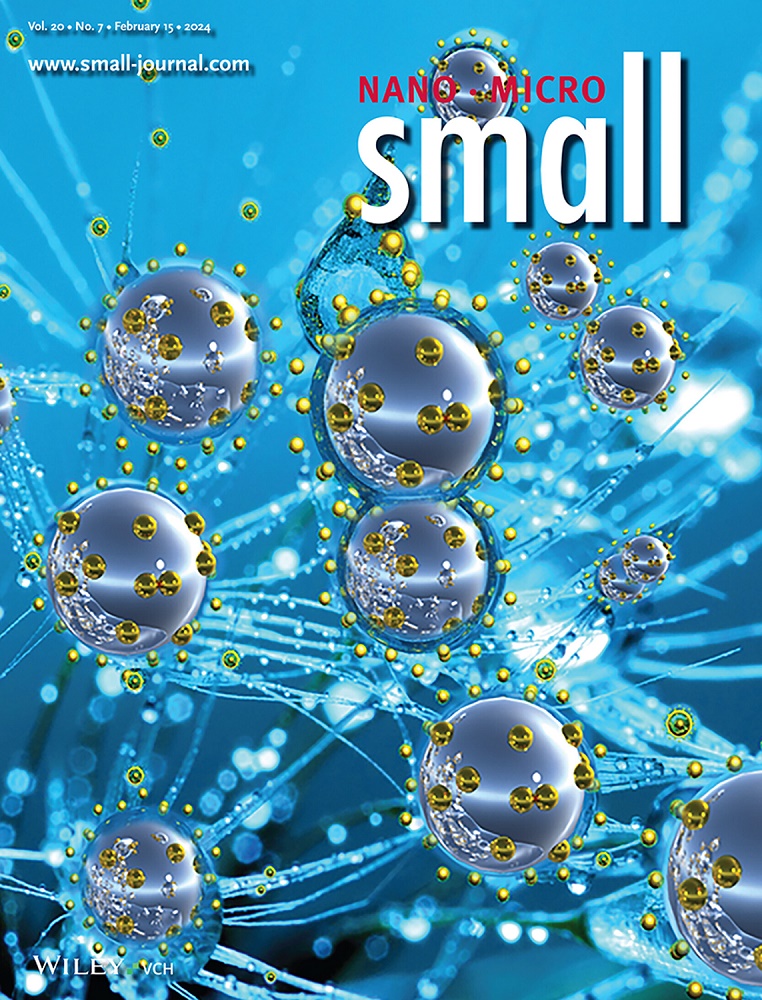Self-Contained Analog Switching in AgHfO3-x Memristor with Lattice-Sourced Ag Filament for Reliable Synaptic Behavior and Associative Learning.
IF 12.1
2区 材料科学
Q1 CHEMISTRY, MULTIDISCIPLINARY
引用次数: 0
Abstract
HfO2 is one of the most widely studied materials for resistive switching, owing to its CMOS compatibility and scalable performance. However, HfO2-based memristors suffer from stochastic filament formation, high device-to-device variability, and limited analog tunability due to abrupt and uncontrolled conductive filament growth, which limits their suitability for neuromorphic computing applications. Moreover, they often require external active electrodes like Ag or Cu to induce reliable switching, limiting material flexibility and integration. To overcome these challenges, AgHfO3-x is investigated, a silver-containing perovskite that inherently supports uniform and stable analog switching without relying on active metal electrodes. Oxygen vacancies formed during deposition, together with lattice silver, create hybrid filaments that drive resistive switching. To enhance reliability, oxygen vacancies are suppressed by introducing additional oxygen during deposition, leading to more stable switching and an improved ON/OFF ratio. Beyond reliable memory behavior, the AgHfO3-x memristor demonstrates synaptic functionalities essential for neuromorphic computing. The device exhibits analog modulation of conductance in response to voltage pulse protocols, effectively emulating key biological learning processes such as potentiation, depression, and paired-pulse facilitation. Furthermore, the device shows associative learning through a Pavlovian conditioning protocol, highlighting its potential as a hardware-implemented artificial synapse in next-generation brain-inspired systems.格源银丝AgHfO3-x记忆电阻器中的自包含模拟开关用于可靠的突触行为和联想学习。
由于其CMOS兼容性和可扩展性能,HfO2是研究最广泛的电阻开关材料之一。然而,基于hfo2的忆阻器存在随机丝的形成、器件间的高可变性以及由于导电丝的突然和不受控制的生长而导致的有限的模拟可调性,这限制了它们在神经形态计算应用中的适用性。此外,它们通常需要像Ag或Cu这样的外部有源电极来诱导可靠的开关,这限制了材料的灵活性和集成度。为了克服这些挑战,研究人员研究了AgHfO3-x,这是一种含银的钙钛矿,它本身就支持均匀和稳定的模拟开关,而不依赖于活性金属电极。在沉积过程中形成的氧空位与晶格银一起形成驱动电阻开关的混合细丝。为了提高可靠性,在沉积过程中通过引入额外的氧气来抑制氧空位,从而导致更稳定的开关和更高的ON/OFF比。除了可靠的记忆行为,AgHfO3-x记忆电阻器还展示了神经形态计算所必需的突触功能。该装置在响应电压脉冲协议时表现出电导的模拟调制,有效地模拟了关键的生物学习过程,如增强、抑制和成对脉冲促进。此外,该设备通过巴甫洛夫条件反射协议显示了联想学习,突出了其作为下一代大脑启发系统中硬件实现的人工突触的潜力。
本文章由计算机程序翻译,如有差异,请以英文原文为准。
求助全文
约1分钟内获得全文
求助全文
来源期刊

Small
工程技术-材料科学:综合
CiteScore
17.70
自引率
3.80%
发文量
1830
审稿时长
2.1 months
期刊介绍:
Small serves as an exceptional platform for both experimental and theoretical studies in fundamental and applied interdisciplinary research at the nano- and microscale. The journal offers a compelling mix of peer-reviewed Research Articles, Reviews, Perspectives, and Comments.
With a remarkable 2022 Journal Impact Factor of 13.3 (Journal Citation Reports from Clarivate Analytics, 2023), Small remains among the top multidisciplinary journals, covering a wide range of topics at the interface of materials science, chemistry, physics, engineering, medicine, and biology.
Small's readership includes biochemists, biologists, biomedical scientists, chemists, engineers, information technologists, materials scientists, physicists, and theoreticians alike.
 求助内容:
求助内容: 应助结果提醒方式:
应助结果提醒方式:


